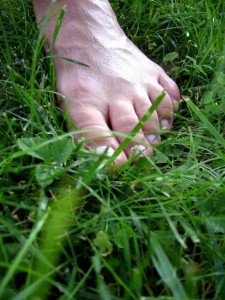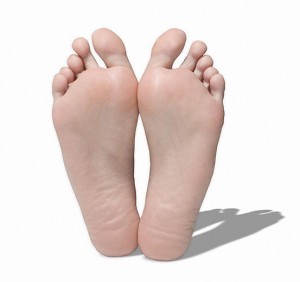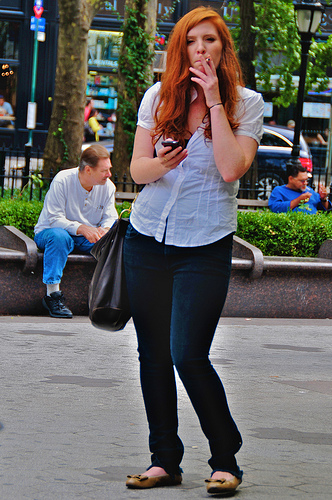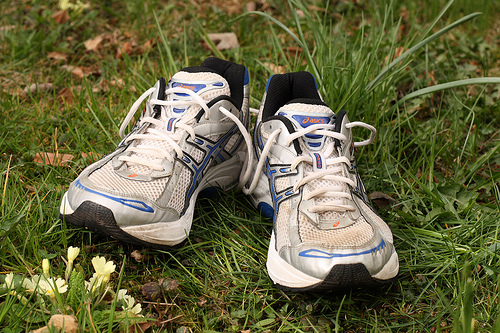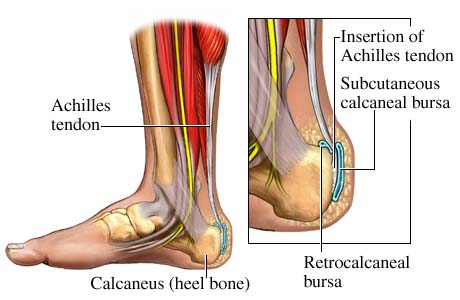Many runners I speak with in the gym believe that in order to improve their running, they need to lift weights in a fashion that’s similar to running. That is, they believe lifting very light weights for many many reps (thus creating an endurance-like situation for their muscles, heart and lungs) will lead to better performance. Conversely, many endurance athletes see no reason to lift heavy weights. They often believe they’ll become muscle bound and/or injured. (Besides, when was the last time the winner of a 10k stopped to deadlift for three reps?) The fact of the matter is, runners–both sprinter and distance runners–will benefit from lifting heavy weights and/or explosive movements. There. That’s what I have to say. Now let me explain…
Strength is your friend.
Strength is like money: No one ever complains that they’ve got too much. (Please let me know if, after a race, the 2nd place finisher said to the camera, “I’d probably have gotten first if I’d just been a little weaker.) Stronger muscles will propel you faster and/or further. Our view of endurance however may clash with our view of strength. They may seem like two very different concepts. We may think that endurance is strictly a heart & lung thing. Strength and endurance aren’t that different though. Strength and endurance are very strongly linked. And for the endurance athlete, improving muscle strength will also improve his or her endurance.
Several studies have indicated strength training increases endurance performance in cross-country skiing, running (here, here, here) and cycling (here, here, here). Explosive exercises and very heavy strength training (1-5 RM) have been researched and shown to improve running economy, anaerobic power, and lactate threshold. (Further discussion and references can be found here and here). Thus, exercising in a fashion that’s very different from running–that is a very few seconds of explosive movement and/or lifting very heavy objects a few times will benefit an activity done at a much lower intensity for a much longer time. So while it’s obviously vital to engage in your endurance sport of choice in order to improve in that sport, the addition of the right strength training protocol will increase your performance. What’s at work here?
Physiology
Endurance performance is more than just the heart and lungs. Several sources (here, here) have suggested that neurological and muscular factors play important roles in endurance performance. We know this because several of the above studies show an increase in performance with no improvement in VO2 max. That is, the heart/lung function didn’t improve–but something did! Improvement in running economy is indicated in several studies.
We should consider a couple of effects of explosive and heavy weight training. First, the muscle fibers used in running are likely made stronger via these methods. Thus muscles can generate more force and a more powerful stride. Second, more muscle fibers may have been drawn into action, again making for a greater ability to drive forward during stride. The results from either of these situations is that we should be able to use less energy to run just as far and as fast as before–AND we should be able to run farther and faster period. Great!
What about muscle and weight gain?
Many runners are worried about gaining weight from lifting too much heavy weight. The fear is reasonable in that any sort of weight gain will likely slow down a distance runner. (The right amount of new muscle mass in a sprinter however may be beneficial.) The reality is though there is nothing for a runner to fear from lifting heavy. There are several reasons.
First, putting on lots of muscle is mainly a function of eating. To put on mass, one must eat like a grizzly bear: several sizeable meals per day (not just snacks), gobs of meat, lots of all sorts of food. This sort of eating can’t be done unconsciously. There must be intent.
Second, we have the genetics issue. It’s very likely that people gravitate to endurance running because they’ve been dealt a hand of genetic cards that facilitates running. This same hand of cards DOES NOT facilitate growing large muscles. Thus there is often a self-selection process that sees certain people participate and excel in endurance sports while others may tend toward strength-and-power sports or bodybuilding–activities that in order for the participants to excel, require large amounts of muscle mass.
Third, explosive and heavy strength training doesn’t build big muscles. (Huh?) These methods are far more stimulating to the nervous system than they are to actually growing bigger muscles. That is, we’re looking at getting the brain to cause more muscle fibers to fire in order to create an explosive movement or lift something heavy. A different process is at work for growing muscles, and this process is better stimulated by lifting moderate weights for roughly 8-15 reps.
To give a further example, if we look at sports involving weight classes (boxing, wrestling, martial arts, weight lifting, power lifting for example) we see that many of these athletes need to get stronger without gaining weight. Otherwise they’ll end up in a weight class in which they can’t contend. These folks need to get stronger but not bigger. (Sound familiar?) How do they do this? They lift heavy.
Next, I’ll discuss workouts based on these factors.

